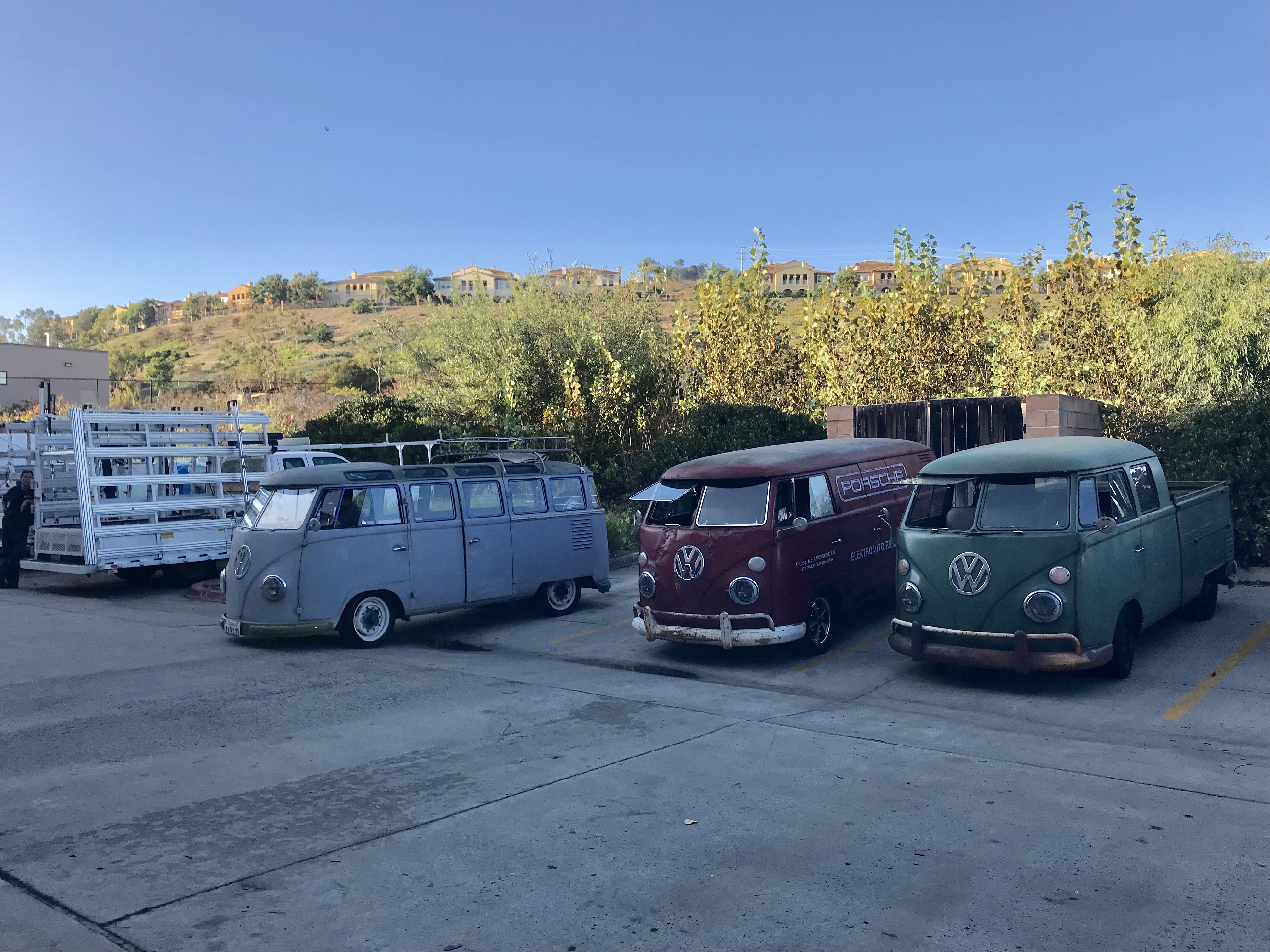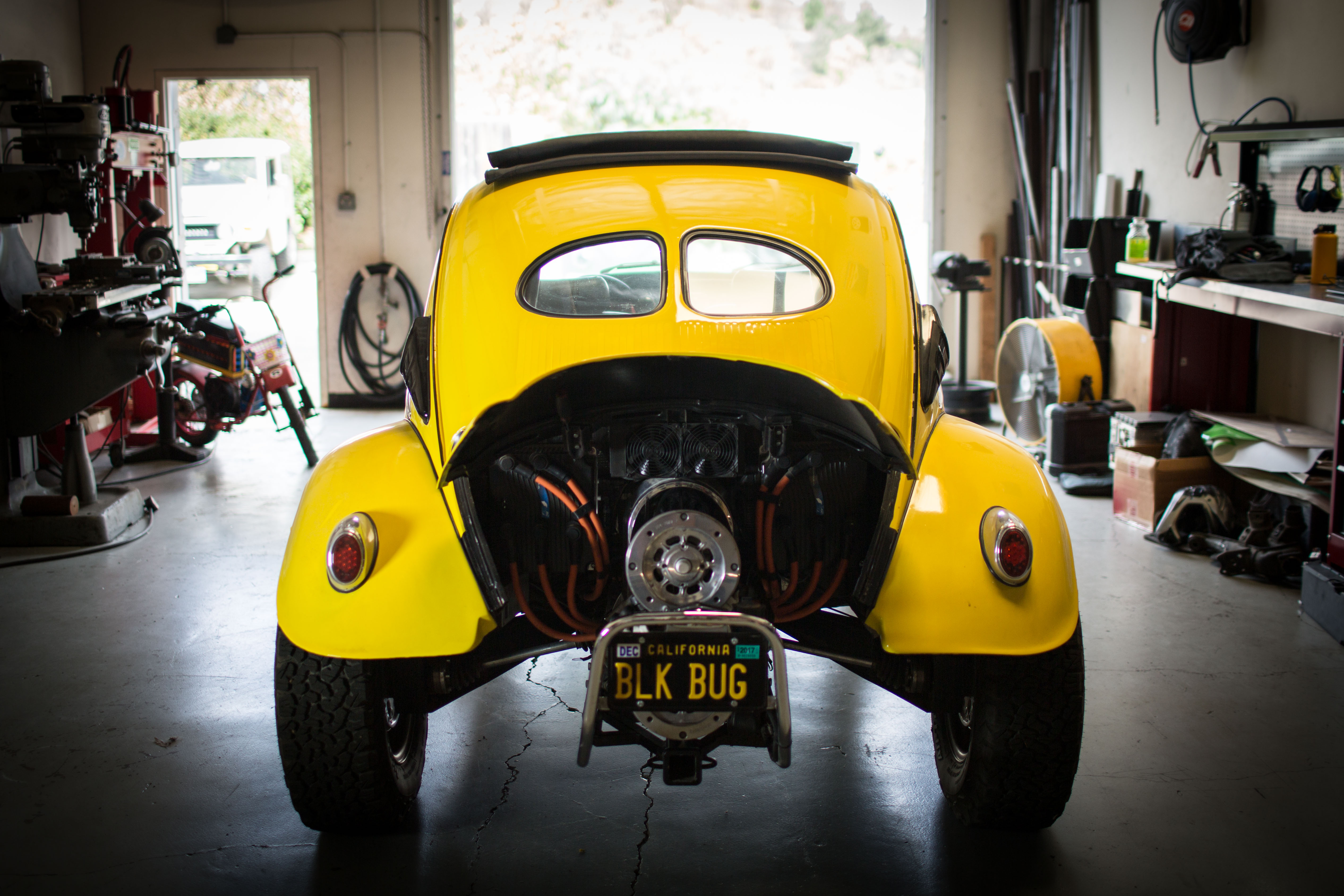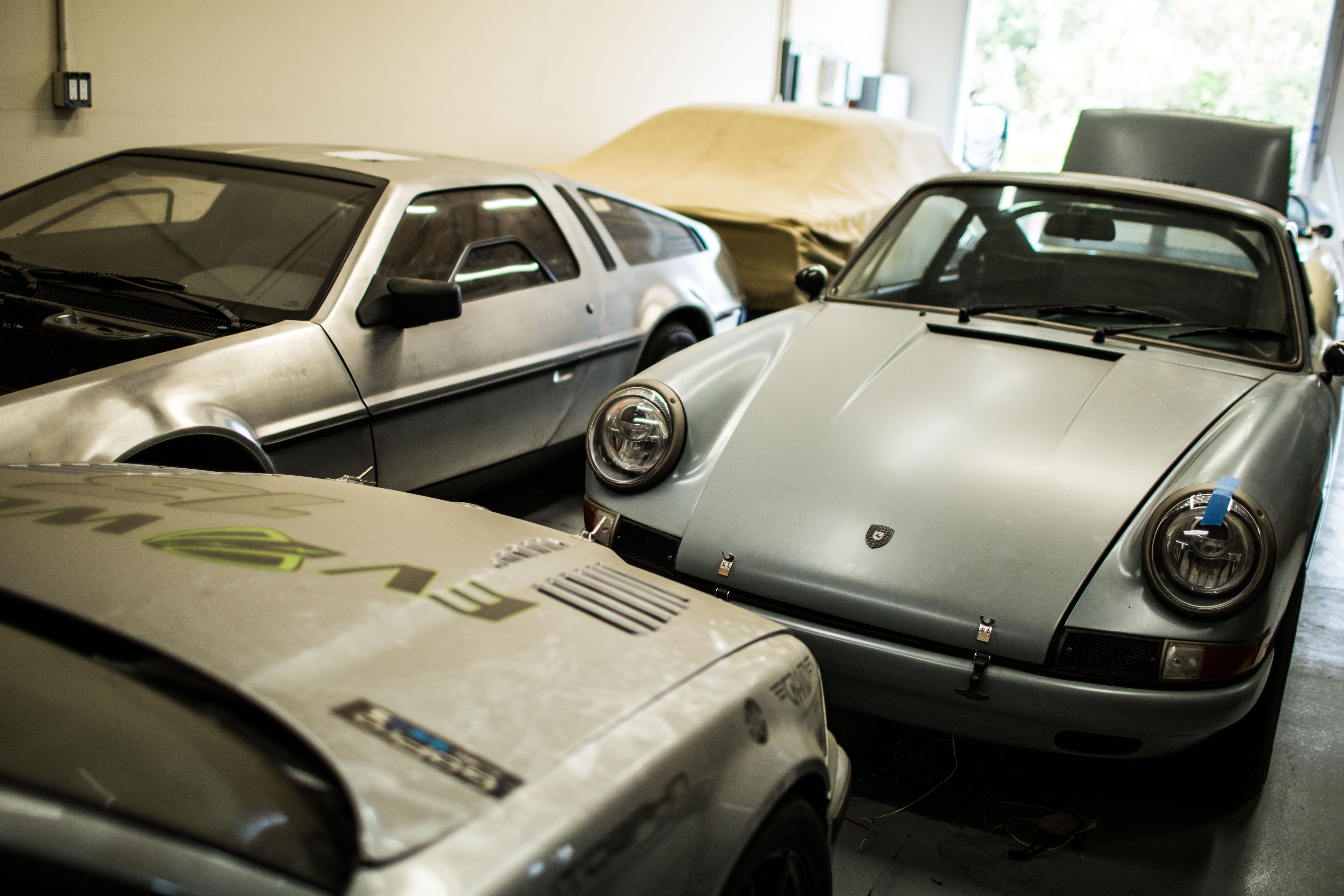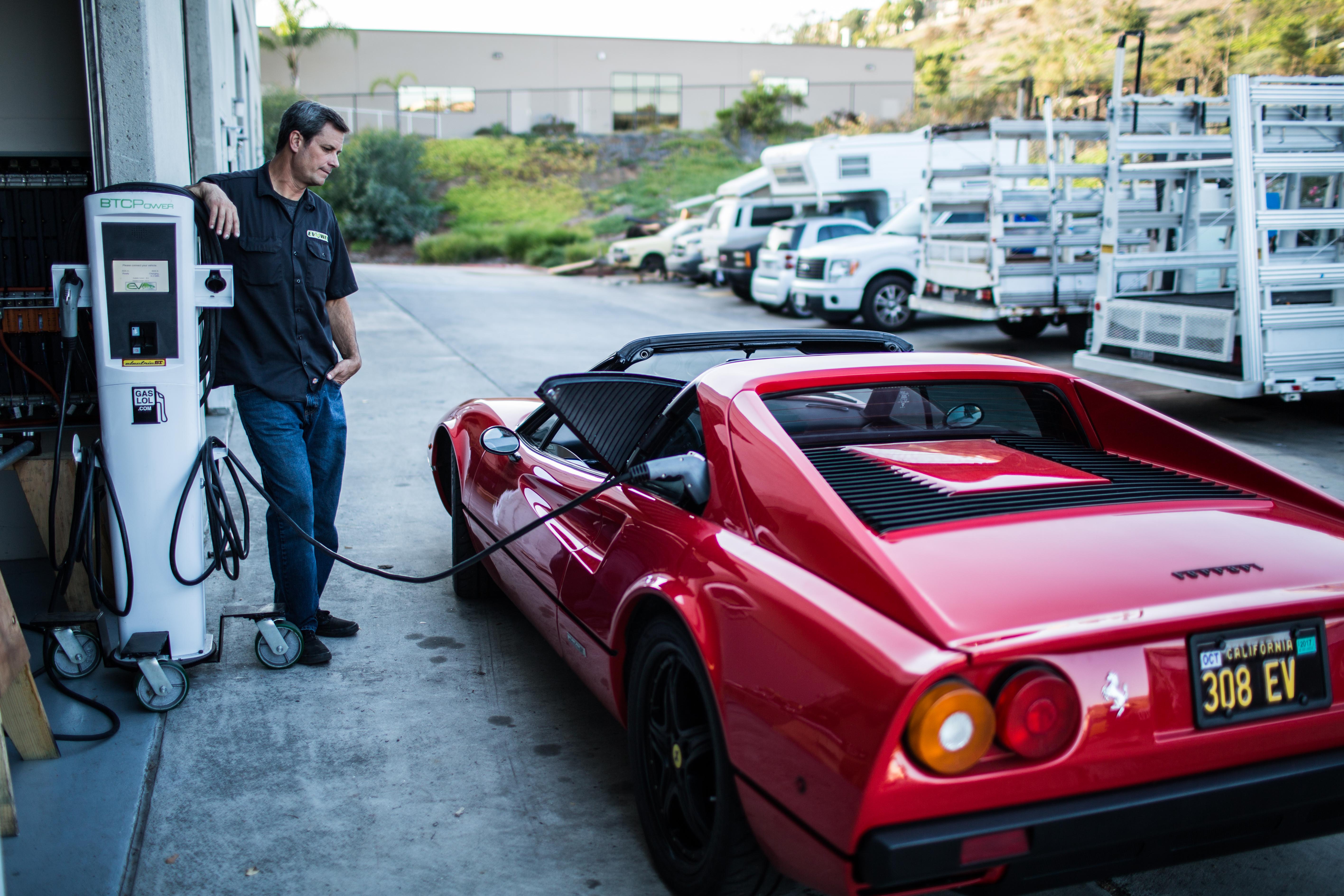Meet the DIY Mechanics Retrofitting Classic Cars With Electric Motors
Credit to Author: Louise Matsakis| Date: Thu, 02 Nov 2017 15:27:57 +0000
“What sound does daddy’s car make?” Michael Bream asked his son, Eli. The two-year-old paused for a moment. “Vroom,” he said.
“No, that’s not it,” Bream said. Something clicked inside Eli and he made another, softer noise. “Woosh.” Bream nodded.
Bream’s car and the classic hot rods his shop modifies don’t sound like normal vehicles when you race them on the highway. That’s because they run completely electric—no gas required. I paid a visit to Bream’s shop, EV West, in Southern California this October.
EV West is a boutique car garage specializing in removing combustion engines and replacing them with electric batteries. Bream and his team of around a dozen technicians have transformed everything from a 1950s Volkswagen bus to a Ferrari 308 GTS from gas guzzlers to fully-electric rides.
Older vehicles are often less efficient and release more carbon emissions than their newer counterparts, but many people choose to drive them anyway because, well, they look cool. Thanks to EV West, car fanatics don’t need to compromise between the environment and having a classic ride.
Bream’s small car garage is located behind a string of commercial warehouses in San Marcos, California, a sleepy suburb not far from San Diego. The whole place feels more like a computer lab than a car shop. There’s no gasoline smell, and the garage is devoid of the kind of grease I associate with my local mechanic. On the walls are old car posters that have been photoshopped to boast the benefits of electric power.
In one corner is a Tesla Powerwall, a large battery that stores energy harvested from 18 or so solar panels on EV West’s roof. Bream’s team uses the Powerwall to charge many of its electric cars.
EV West acquires batteries for its cars in an usual way. When a Tesla Model S crashes, its parts are often sold at auction. Bream’s garage then snaps them up, and installs them inside vintage cars. The old engines are sold on the secondhand market, where there’s still demand for original vintage parts.

Modifying a car to utilize electric power doesn’t come cheap. If you want to have EV West do it for you, it’ll cost around $18,000. That’s if you bring in a vintage Volkswagen Beetle and want it outfitted with an electric battery that has a 100 mile range. Different model cars and larger batteries will cost you extra. You’ll also need to be patient: business is booked for the next year.
“We really take our time to make sure [the cars] are up to our standards,” Bream told me.
While wandering around Bream’s shop, I met some of the gearheads who work for him, like Spencer Larue. In college at San Diego State University, he built an electric mini bike that he ripped around indoors. “Because it’s electric, I could cruise down the hallways,” Larue said.
After checking out the garage, Bream took me for a ride in a vintage electric Volkswagen Beetle painted bright yellow. “This is an old car,” Bream said. “Sometimes the doors open.” He then ripped the bug around a weedy field behind the garage, as a half-dozen or so of his mechanics watched me scream out the passenger side window.
Riding in a vintage car modded to use electric power feels strange. The car quietly surges forward, and doesn’t rumble at all. It feels smooth in a way that a manual transmission isn’t supposed to. It’s like the car is somehow running on butter. The experience is pleasingly futuristic—even if the upholstery your butt rests on is decades old.

EV West is ultimately a tiny shop that’s part of an equally small industry—at least for now. The garage only mods around a dozen cars per year, and less than one percent of vehicles on the road worldwide today run electric.
At the same time, EV West stands at the edge of a promising future for electric vehicles. They’re set to outsell fossil-fuel powered cars within two decades, Bloomberg’s New Energy Finance group predicts. Cars with a plug will constitute a third of the global auto fleet by 2040, displacing eight million barrels a day in oil production, according to the same report. That’s significantly more oil than all of ExxonMobil produces each day.
One of the reasons experts predict electric vehicles will finally become mainstream is that the cost of producing the lithium-ion batteries they depend on is dropping rapidly. Battery prices are crucial because they represent one-third of the cost of building an electric car. The cost of making one fell 35 percent in 2015, and the world’s lithium mines are already bracing for a major uptick in sales of electric vehicles in the next couple of years.

“I fear people won’t do the right thing [drive electric] until it’s cheapest,” Bream told me. “My only true hope is that these renewables will be cheaper.”
Experts estimate that Bream’s hope could soon become reality. By 2040, long-range electric cars will cost less than $22,000 in today’s dollars. That’s pretty cheap—a gas-guzzling 2017 Honda Civic costs about the same.
One question left to answer: If electric cars hit the road en masse, how will we harness the necessary electricity to power them? The answer is likely renewable energy sources like wind and solar. Solar power in particular is promising: It’s currently the fastest growing source of new energy, according to the International Energy Agency. Jobs in the industry are also reportedly growing 17 times faster than the US economy.
Still, there’s reason to be skeptical about a future where electric cars rule the road. For now, they can’t go very far without recharging, and charging stations remain scarce. As electric cars help bring the cost of oil down, there’s also a chance other parts of the world will double-down on newly cheaper fossil fuels.
Michael Bream and his team at EV West have chosen to remain optimistic, for good reason. Every car in their garage is a testament to how the power of clean, electric energy can transform how we get around. Especially the bright red 1978 Ferrari 308 GTE.

The car was burned in a fire and later restored to utilize a new power source, making it the world’s first electric Ferrari. Eric Hutchison, a friend of EV West, found the sportscar at a junkyard, bought it for a steep discount, and rebuilt it. Riding in the car feels particularly rebellious when you consider that Ferrari’s chairman Sergio Marchionne once said that an electric Ferrari would be “obscene.”
I bet he’s never taken the world’s first for a spin.
Dear Future is a partnership with CNET that will explore the people, companies, and communities that are ushering in the future we were all promised. Follow along here.